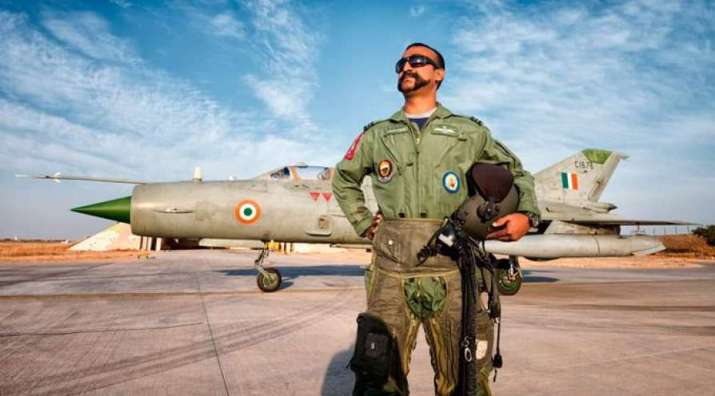By the term next Mig-21, here I mean the next bird in the Indian Air Force which is destined to face a similar fate as Mig-21 has been facing in the recent past.
Mig-21s entered IAF’s fleet in 1963, during the war of 1965 Mig-21s were part of the IAF armada but they spent most of the war on ground. During the infamous Pathan Kot strike of No.19 Sqn led by then Sqn Ldr: Sajjad Hyder was the first occasion where PAF destroyed Mig-21s on the ground and later in the air during the 1971 war, 1999 Kargil conflict, and 2019 skirmishes. Over 900 Mig-21s served the IAF out of which 60% were built in India by HAL under license from the Soviet Union between 1966 to 1984. Currently, around 70 plus Mig-21 BISONs are serving the IAF in 4 operational squadrons. In the Early 2000s IAF Mig-21 fleet received Bison upgrade that included a newer FCR, RWR, and other avionics and armaments upgrade that ensured it could survive a modern-day war scenario.
Since their introduction more than four hundred IAF Mig-21s have crashed causing more than 200 pilots and 60 plus civilians to lose their lives. The major contributing factors to such poor operational history are numerous. Notably, the quality, poor quality can be attributed to the basic Soviet mindset of quantity over quality. 2nd and 3rd-generation Soviet fighter jets were not made for such stretched service life. Technological advancements were very rapid back then and fighter jets were not manufactured with intentions to upgrade the existing airframes but rather to manufacture new airframes with newer technologies, hence there are so many variants of 2nd and 3rd generation fighter aircraft.
IAF has been compelled because of multiple factors which are ultimately responsible for the loss of precious human lives. Mig-21s in IAF were intended to be replaced by India’s indigenous Light Combat Aircraft Tejas. Tejas is a long story of failures and blunders. Lacking decades behind the schedule and still not fully qualified for frontline operational services. Tejas has become more of an ego issue for India, their leadership is compelled to invest in Tejas which has missed its intended goals by a huge margin. Another way that is most adopted by countries is to purchase foreign hardware as a stopgap, during the development and deployment cycle of JF-17 Pakistan Airforce continued inducting other aircraft and duly maintained its squadron strength and raised a few new squadrons of fighters and force multipliers.
The geopolitical position of India and its future intentions compel it to maintain a huge military. Indian Air Force is sanctioned by Government to have 42 fighter squadrons out of which they are struggling to maintain 30 of which 4 Sqns are Mig-21s, 2 Sqns are Rafales which are not combat ready in IAF, 2 Sqns are notorious Tejas with insufficient airframes. On multiple occasions, it was announced that India will procure foreign fighter jets to meet the operational needs of IAF, but those procurements were subjected to political controversy, corruption allegations, and swing of power from congress to BJP, out of 114 intended MMRCA fighters India only got 36 Rafales and no further order of Rafale or any other jet has been made yet.
The current political leadership of India is insisting on indigenization under their make in India program which is great initiative but only from a political point of view it is damaging India’s operational capabilities and continuing so will weaken it further and we may see other combat aircraft of IAF facing similar fate as Mig-21.
Mig-23 and Mig-27 Bahadur have already been withdrawn from service despite they were inducted after Mig-21s. Poor maintenance has been a key issue in IAF.
Even western fighters who come with prescribed maintenance procedures. Over 13 Mirage-2000s and 56 Sepecat Jaguars of IAF have met accidents since their introduction in service. IAF & HAL’s quality standards are highly questionable. The most numerous fighters in IAF Su-30MKI are also assembled locally by HAL, 11 of those have already crashed. There have been two notable accidents in recent history, one where a freshly made Su-30MKI crashed because an old faulty engine was installed on new jet, second a newly upgraded dual seater Mirage-2000I met a very unfortunate accident while rolling down the runway trying to ascend and the control surfaces went haywire and the aircraft lost control and crashed both pilots ejected but were engulfed by flames rising out of burning jet. IAF’s history is full of such mishaps and accidents which are attributed to poor engineering standards.
India dreams of becoming a big and influential player in the region and world hence colliding interest with regional players, which compels India to maintain a massive military to cater two fronts and a sizeable navy to secure its interests in Indian Ocean and beyond. Other major powers who maintain such big military like US, Russia and China have their domestic industry and infrastructure supporting it, whereas in India more than 90% of the military equipment is acquired from different countries notably from Soviet Union and some European vendors during the Cold War.
Currently, US, Russia, Israel, and other countries are major suppliers to India. Having such diversity comes with its own set of challenges, establishing maintenance facilities and training manpower to handle and maintain such variety is costly and heavily affects proficiency. Uniformity of equipment is a major factor contributing to efficiency, examples could be found in other militaries of world.
IAF has not learned any meaningful lessons from their history and is still hell-bent on just acquiring stuff from everywhere they can get. Such an approach would keep matters complicated for IAF, which is already struggling with quality standards. IAF has no choice of compromise on quantity but at least they could get some sort of uniformity in terms of hardware used. Success of domestic ventures could have eased a few things for IAF but unfortunately, no major achievement has been made there.
Su-30MKI which is also inducted in huge numbers that too assembled on compromised standards is bound to have a similar fate like Mig-21, Super Sukhoi upgrade is being talked about, but it seems far from reality. Many apparent factors are there indicating super Sukhoi is yet too far.
Author: Darya Khan
Follow Darya Khan on Twitter: @GazDaJeuz
#TeamPakistanStrategicForum







